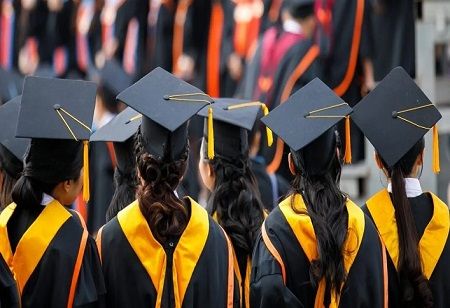-
Transnational higher education is rapidly reshaping Southeast Asia’s educational and economic landscape, driving the region toward a future where global connections and local opportunities seamlessly intersect. As students from Southeast Asia increasingly pursue degrees across borders, they are not just seeking academic credentials but a transformative experience that equips them with cross-cultural skills and international perspectives. Technology also plays a significant role in this process, allowing for online learning without any barriers of a traditional classroom and international collaborations. By taking advantage of the opportunities of transnational education, Southeast Asia is setting itself up as a vibrant center for knowledge exchange, where educational institutions build global partnerships and equip students to succeed in an increasingly interconnected world.
From Colonial Roots to Global Ambitions
The roots of transnational higher education in Southeast Asia date back to the colonial era when Western institutions established educational centers in the region. However, the modern form of transnational higher education began to take shape in the late 20th century with the rapid economic development of the region and liberalization of trade and services. Malaysia, Singapore, and Thailand have realized that the globalized economy demands an upgrade in education offerings and have thus developed international branch campuses (IBCs) and partnerships with foreign universities in the quest for quality education and international learners.
Tech’s Role in Southeast Asia’s Global Learning
Moreover, Technology serves as a crucial tool in the furthering of transnational higher education in Southeast Asia. Improvements in digital platforms, online learning tools, and virtual collaboration technologies facilitate institutions to offer more programs to students all over the world effectively. These technologies assure real-time communication, availability of varied resources, and engagement during the learning process.
Technology further addresses some of the difficulties faced by transnational higher education. For example, online learning platforms offer flexibility in scheduling that makes education possible for working professionals. They allow institutions to track and assess the progress of their students, hence quality assurance. The COVID-19 pandemic elevated technology use in the educational sectors in Southeast Asia due to learning needs to occur on the computer or other similar gadgets while exposing how important the use of digital infrastructure is to learning.
The Impact of Transnational Education
The involvement of transnational higher education aids regional economic development in Southeast Asia. Transnational higher education will supply the market with a well-skilled and internationally competent workforce that can further help develop these different industries. In addition, international students have been found to boost the local economy by their expenditure on dwelling, food, and other service activities. In addition, the setting up of international campuses and partnerships attracts foreign investment, fostering economic growth and development.
Furthermore, while transnational education in Southeast Asia has been on the rise where foreign institutions have established a strong presence in the region through branch campuses and joint ventures, intra-region transnational endeavours remain few and far between. As many transnational endeavours are foreign investments, a lack of intra-regional endeavours may imply a lower economic preference to invest in or to attract investment from neighbouring countries. The joint declaration should reiterate a commitment to prioritising neighbours in Southeast Asia over foreign partners from afar, in both the educational and economic dimensions.
Though transnational education offers many obvious benefits, there remain its challenges such as financial barriers and complicacies associated with diverse educational regulations of different countries. Digital platforms and remote learning solutions now come to fill in the gaps and are valued in making global education more accessible and efficient. In light of embracing these technological innovations and international cooperation, transnational education not only provides the much-needed quality but also drives regional growth. The future holds immense promises in changing Southeast Asia's economic scenario, and in the long run, this educational model promises to shape Southeast Asia’s economic landscape by producing a workforce equipped with the skills needed to excel in a globalized economy, ultimately making the region a key player on the world stage.
Case Studies
EduCity in Iskandar, Malaysia:
Malaysia is establishing itself as a regional educational hub through programs such as the EduCity in Iskandar. EduCity houses satellite campuses of prestigious universities like University of Southampton and Newcastle University offering engineering, business, and medical programs. It has enriched the education system in Malaysia and welcomed international students that contribute to the local economy.
Education City in Singapore
Proof that Singapore has a commitment to become a global education hub lies in Education City, which accommodates international universities and research institutions. This success has furthered the status of Singapore as a center of higher learning and innovative place, shattering borders bringing students and professionals into its shores.
Looking Ahead
The rise of transnational education is rapidly transforming the educational and economic landscape of Southeast Asia. The increasing internationalization of higher education has led to the possible development of IBCs, enabling home students to enjoy world-class education without leaving their countries. This has been strongly significant for the growing demand of higher education, fueled by a burgeoning middle class eager to improve their skills and job prospects. Beyond filling an academic need, transnational education fosters the exchange of knowledge, skills, and cultures, therefore furthering Southeast Asia's deeper integration into the global community.
However, the challenges of ensuring equitable access to education and maintaining consistent quality across various institutions remain. Governments and educational providers are actively adapting by introducing policies that balance cultural relevance with globally recognized standards. Ultimately, transnational education is bridging the educational gap in the region, creating more opportunities for students, enhancing economic growth, and fostering a more interconnected Southeast Asia. As Southeast Asia leans further into transnational higher education, it is set to strengthen its position in the global economy, cultivate a skilled workforce, and ensure sustainable development outcomes.
🍪 Do you like Cookies?
We use cookies to ensure you get the best experience on our website. Read more...

